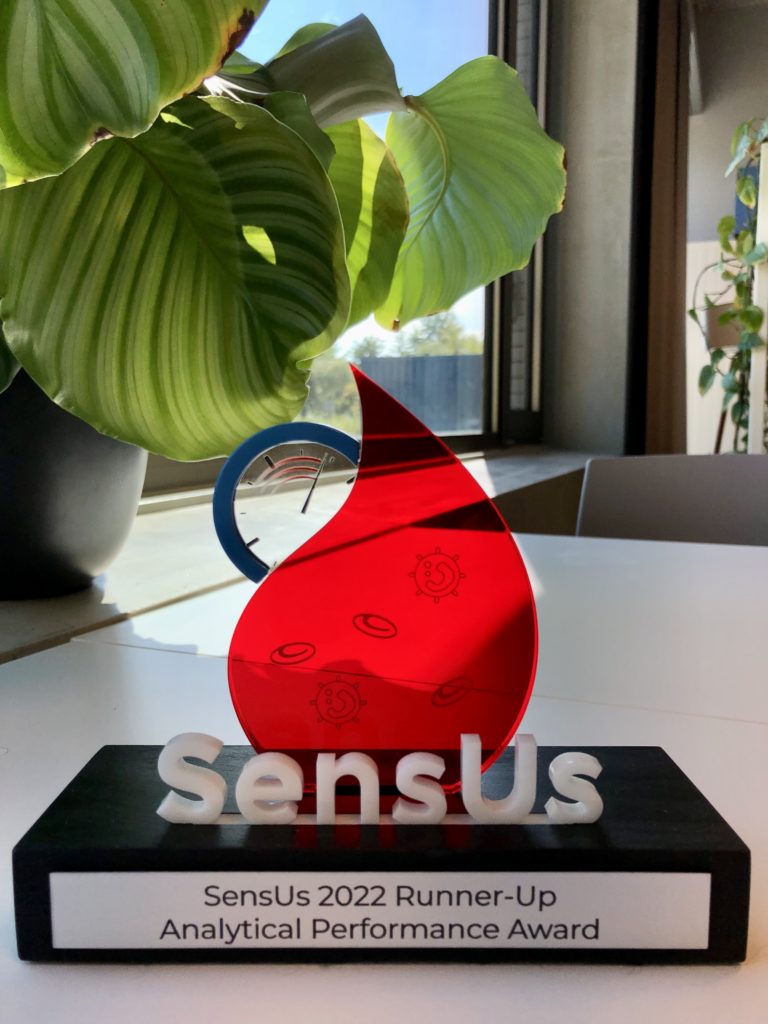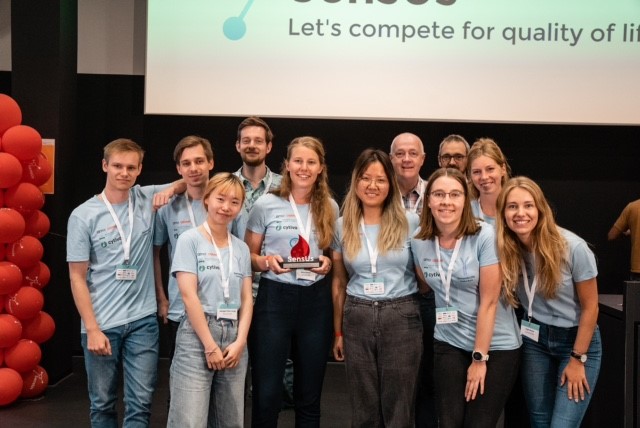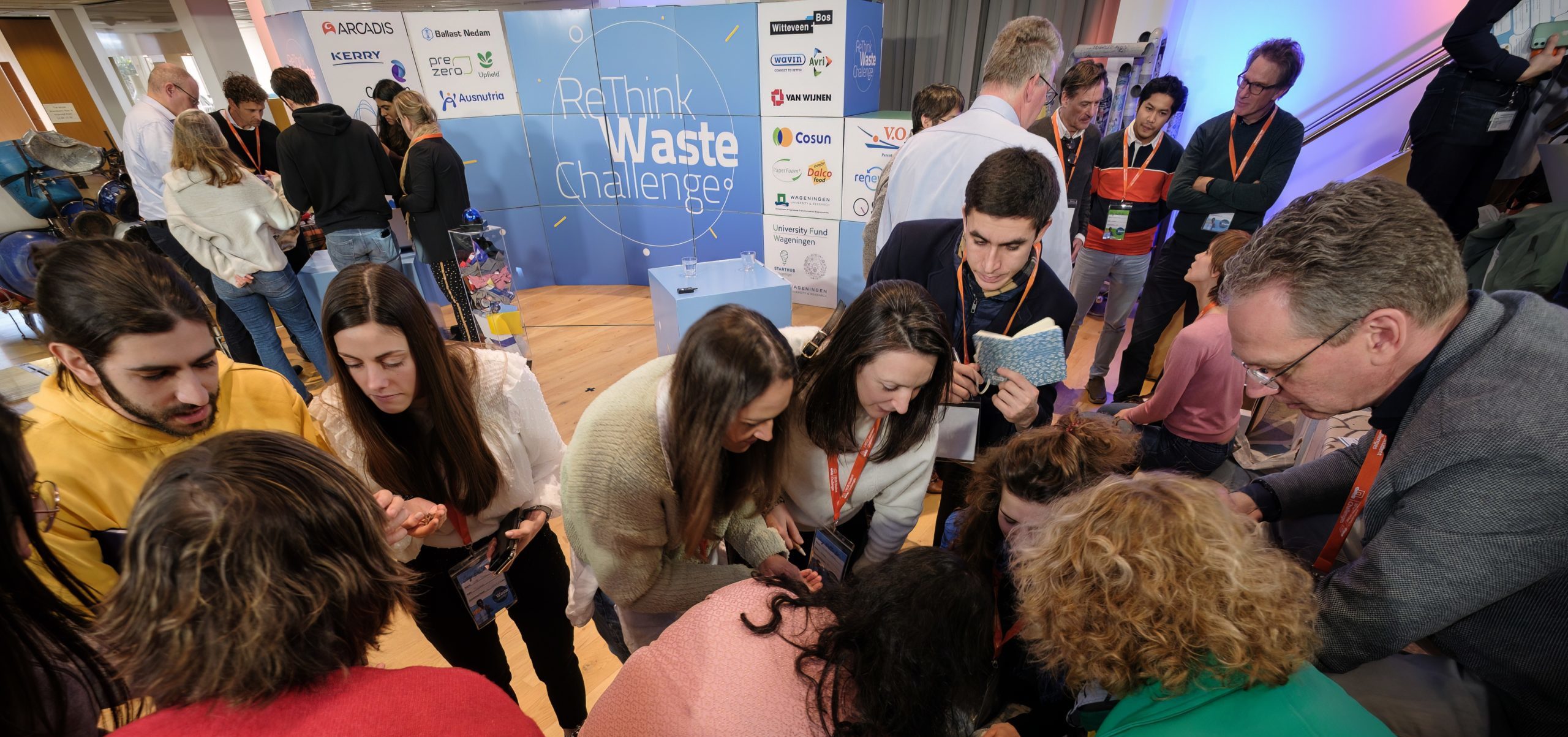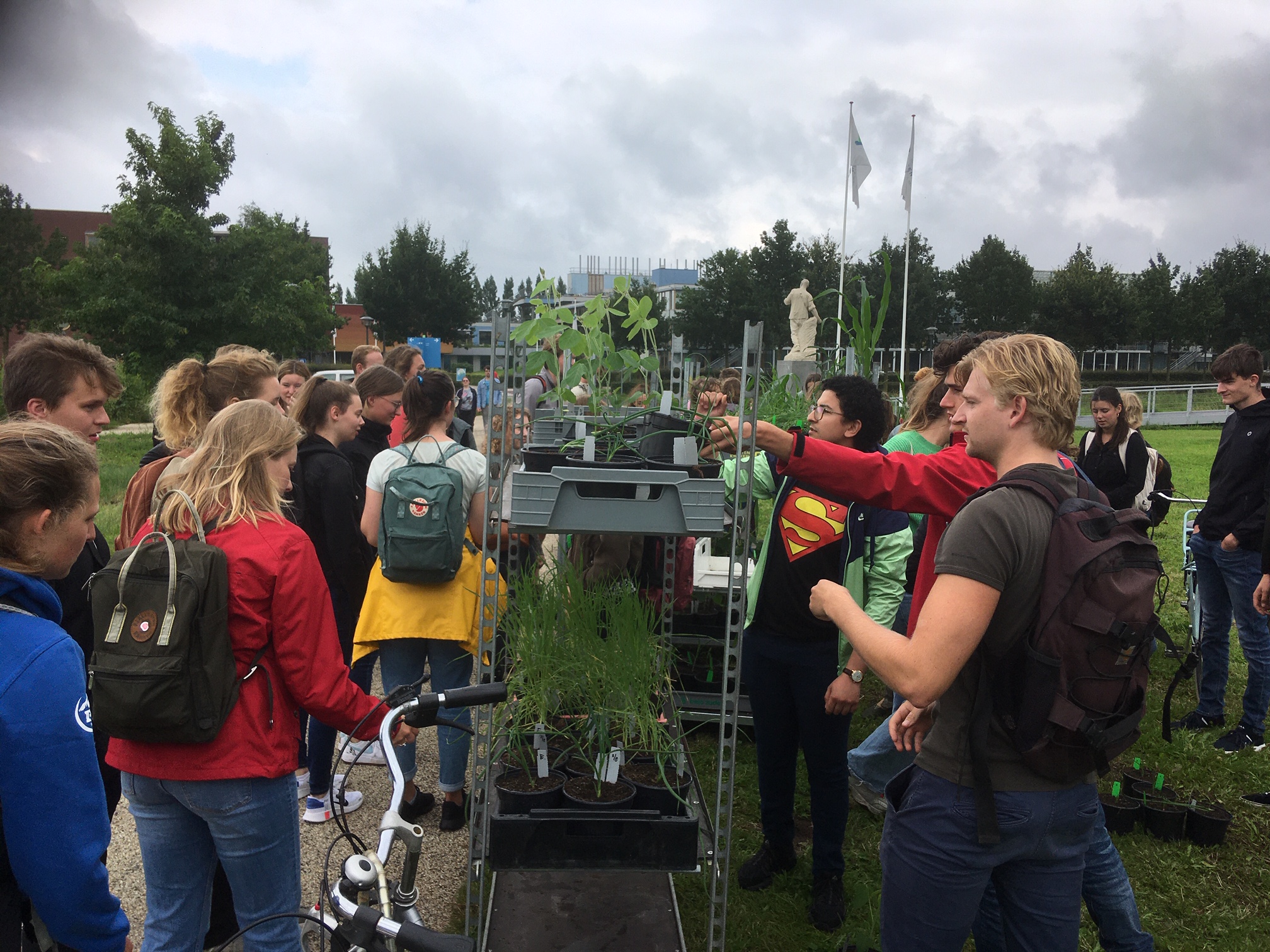The SensUs Challenge is an annual international student contest organised by the TU Eindhoven, which aims to accelerate the innovation of biosensors in health care. Each year, SensUs focuses on a different disease. The participating teams of this year’s edition were asked to develop a biosensor for sepsis, otherwise known as blood poisoning.
Inge Braak and Iris Janssen study Biotechnology and jointly headed the nine-person-strong SenseWURk team this last year. Braak: ‘A biosensor is a tiny device that is used to transform the concentration of a particular substance in your blood into a measurement signal. The assignment was to design a biosensor capable of recognising a particular biomarker. This year, the biomarker was Interleukin-6 or IL-6, a substance produced by your body in the case of infections.’ Janssen adds: ‘The body may sometimes react violently to an infection, causing severe illness. When that happens, your body produces high levels of IL-6. The concentration of IL-6 in your blood thus shows the stage of your sepsis.’
Although sepsis is not the most well-known disease, it is the prime cause of death in intensive care units.
The team developed a rapid test -similar to the rapid covid test- capable of tracing IL6. Janssen: ‘It looks a little similar to the covid test, but we use blood plasma instead of a cotton swab with saliva. If the blood plasma contains IL-6, the test emits a fluorescent signal. The higher the concentration of IL-6, the more fluorescence.’ The fluorescence can be measured with a reader linked to a computer. ‘This enables you to measure with considerable accuracy how much IL-6 is contained in the blood plasma.’ The higher the concentration, the more acute the situation.
Sepsis
Although sepsis is not the most well-known disease, it is the prime cause of death in intensive care units, the SenseWURk team leaders stress. ‘The elderly in particular, but also people with chronic conditions or reduced immunity and young children are at risk’, Braak states. ‘Symptoms include extreme fever, tremors, feeling hot and palpitations.’
Determining the presence of sepsis can take between a few hours and days in a clinical lab, according to Braak. ‘Our rapid test enables you to determine the concentration of IL-6 in blood plasma within 30 minutes.’ Janssen: ‘The sooner sepsis is identified, the sooner antibiotics can be administered. Every hour the sepsis goes untreated, the risk of death increases by eight per cent. A rapid test can save many lives.

Team SenseWURk is the first Wageningen team ever to enter the SensUs Challenge. ‘We worked hard all year. Blood, sweat and tears’, says Janssen. ‘Last week, we were in Eindhoven for four days for the finals. There, we met with companies, talked to many people, and pitched our rapid test. Braak: ‘We also learned how to write a business plan. This challenge is more than merely the technical aspects. Very useful if you want to develop further outside of your curriculum.’
SenseWURk came in second in the challenge. The team is currently exploring options to develop the IL-6 test further, says Braak. ‘We were awarded the prize for the speed and accuracy of the test. But it is still a prototype, and we work with plasma instead of blood. We must take further steps before people can test for sepsis at home. But this may be very useful for general practitioners and hospitals.’
Further development
Aart van Amerongen (BioSensing & Diagnostics at Food & Biobased Research) is one of the SenseWURk supervisors: ‘Seeing this team work on developing the test was amazing. They showed enormous drive. Coming in second is not just a surprise for the students, but for us also, particularly considering this is the first time Wageningen entered the challenge.’
It has since become clear the two of the team members will go to the Slush conference in Helsinki, where start-ups, investors, media and corporates gather. Van Amerongen: ‘this may be the start of a new business.’
The team SenseWURk students, alphabetically: Kimm Borst, Inge Braak, Sieka Buis, Martijn Ekhart, Iris Janssen, Mengyichen Long, Eleni Meuffels, Lutger Rutten, Xueyi Yang. They were coached by, among others, Aart van Amerongen, Jan Wichers, Ruben Massop, Vittorio Saggiomo and Johannes Hohlbein.

 Team SenseWURk. Foto Rob Lipsius
Team SenseWURk. Foto Rob Lipsius 
